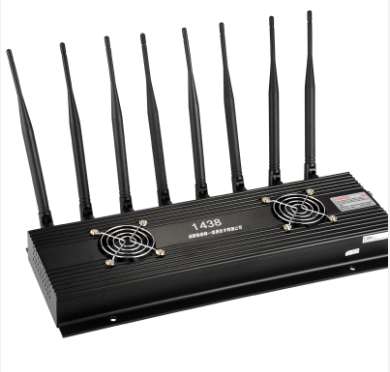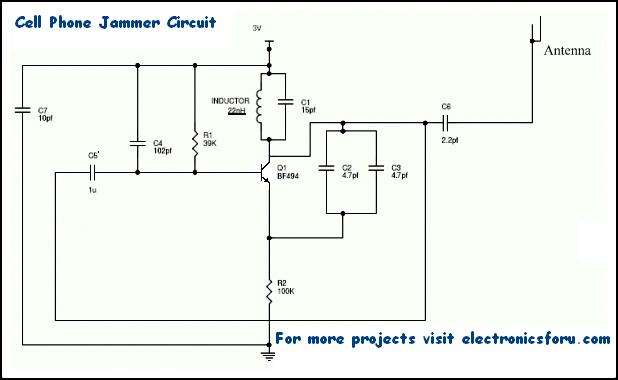10 Things You Need to Know About Mobile Phone Jammers

Mobile phone jammers, also known as cell phone blockers, are devices that emit radio waves in the same frequency range as cell phones, effectively blocking their signals and rendering them unable to make or receive calls. These devices have become increasingly popular in recent years due to the rising annoyance of cell phone use in public spaces. However, the use of mobile phone jammers is illegal in many countries, including the United States, due to a variety of legal and safety concerns.
The main reason that mobile phone jammers are illegal is that they interfere with important communications systems, including emergency services and aviation frequencies. When used in public spaces such as cinemas, restaurants, or public transportation, jammers can render emergency calls or in-flight communication systems unusable, posing a serious safety risk. Additionally, the use of jammers by individuals or organizations can disrupt cellular networks, causing widespread service outages and potentially putting lives in danger.
Despite these risks, the use of mobile phone jammers remains prevalent in some areas. Some organizations, such as schools and correctional facilities, use jammers to prevent unauthorized cell phone use by students or inmates. However, these institutions must use specialized equipment that does not interfere with emergency communications or other essential services.
There is also a growing concern about the use of jammers by individuals who wish to maintain privacy or security in their own homes or businesses. While there are legal methods of blocking cell phone signals, such as using signal-blocking paint or shields, the use of jammers is not a viable option in many countries.

10 Things You Need to Know About Mobile Phone Jammers
1. Mobile phone jammers are illegal in many countries, including the United States, Canada, and the United Kingdom.
2. Jammers can be used to prevent unauthorized communication in sensitive areas such as prisons or military bases.
3. However, using a mobile phone jammer can have serious consequences, including fines, imprisonment, or both.
4. Jammers can interfere with emergency communication systems, putting lives at risk.
5. They can also lead to dropped calls, poor signal quality, and other disruptions for nearby cell phone users.
6. Mobile phone jammers work by emitting radio frequency signals that block or interfere with cell phone signals.
7. The use of mobile phone jammers is a violation of the Federal Communications Commission’s rules and regulations in the United States.
8. In addition to being illegal, the use of mobile phone jammers is also dangerous and can cause harm to others.
9. There are legal alternatives to using a mobile phone jammer, such as signal blocking bags or phone signal blockers that are specifically designed for use in sensitive areas.
10. If you are caught using a mobile phone jammer, you could face serious legal and financial consequences, as well as harm to others.
Why Cell Phone Jammers Pose a Legal Problem
Remember, the use of mobile phone jammers is illegal in many countries and can have serious consequences.
While jammers can be used to prevent unauthorized communication in sensitive areas such as prisons or military bases, it is important to understand the potential consequences of using a mobile phone jammer before purchasing or using one.
Jammers can interfere with emergency communication systems, putting lives at risk. They can also lead to dropped calls, poor signal quality, and other disruptions for nearby cell phone users.
Cell phone jammers are illegal in many countries, including the United States, Canada, and the United Kingdom. The use of jammers can result in fines, imprisonment, or both.
Which countries consider the use of mobile phone jammers illegal?
Mobile phone jammers are illegal in many countries including the United States, Canada, the United Kingdom, Japan, Australia, New Zealand, South Africa, and most European countries. However, the specific regulations and penalties for using jammers vary by country. It is important to check with local authorities before attempting to use a cell phone jammer to avoid legal consequences.
Can I buy a signal jammer?
First, you need to understand the legal risks of purchasing a signal jammer. If you have proper authorization or if their use is allowed by the country, you may proceed with the purchase. The easiest way to buy one is through our website. These devices mainly function by distinguishing signal types, so it is important to select one based on your specific signal requirements. The probability of a signal blocker working properly near a base station is low, so it should be used in appropriate areas.
How do you bypass a jammer?
Bypassing a signal jammer is relatively straightforward. Firstly, it is important to note that most jammers have a limited range of action. If you experience interference, try stepping away from the affected area to see if the interference is still present. If it is, increase your distance from the jammer. Additionally, it may be possible to determine the jammer’s position as the range of interference is typically circular. However, this range can be affected by buildings and other obstructions. In such cases, it may be necessary to assume the range and pinpoint the jammer’s exact location. Another option is to increase the signal strength by installing a signal amplifier. Alternatively, it may be necessary to contact the relevant authorities to resolve the issue. It is important to note that attempting to bypass a signal jammer is illegal and unethical, and can have serious consequences. Therefore, it is recommended to respect the laws and regulations of your country and refrain from attempting to bypass jammers.
How Do Cell Phone Jammers Work?
disrupt or jam the signals sent and received by cell phones within a certain radius. These signals interfere with the frequencies used by the cell phones to establish connections with their respective cell towers, rendering them unable to make or receive calls, send or receive text messages, or use mobile data.
The jamming process occurs when the jammer emits the same frequency as that used by the phone, thus overpowering and blocking the signal. The strength of the jamming signal can be adjusted to affect a specific range, from just a few meters to several hundred meters, depending on the type and power of the jammer.
Cell phone jammers are commonly used in places where the use of mobile devices is restricted or prohibited, such as in hospitals, movie theaters, and religious institutions.
How to Build a Cell Phone Jammer?
A cell phone signal jammer is an electronic gadget designed to prevent the transmission of signals between a mobile phone and a base station. The jammer operates by emitting the same frequency as that of the mobile phone, creating a potent disturbance that interrupts communication between the sender and receiver.
The jammer is highly efficient at blocking signals from various networks, comprising UMTS, 3G, CDMA, GSM, and PHS. Its effectiveness stems from the capability to generate a powerful and interruptive frequency that disrupts the flow of information between the communication devices.

The RF amplifier circuit is composed of components such as transistor Q1, resistor R1, and capacitors C4 and C5. This circuit serves to amplify the signal generated by the tuned circuit. Once amplified, the signal is fed to the antenna through capacitor C6 which prevents DC from passing while only allowing the AC component to transmit.
When transistor Q1 turns ON, the oscillator circuit which consists of the capacitor C1 and inductor L1 is activated. This circuit produces a high-frequency signal with minimal damping.
The oscillations operate through the charging and discharging of the capacitor, storing voltage and magnetic energy in the inductor. As the current flows through the inductor, it generates magnetic energy that corresponds to the voltage across the capacitor. This process of charging and discharging the capacitor repeats itself until internal resistance is generated, and the oscillations come to a halt.
Capacitors C2 and C3 generate random noise signals at the same frequency as that produced by the tuned circuit. These pulses are then combined with the signal generated by the tuned circuit and amplified by the RF amplifier, eventually transmitting the combined signal.








